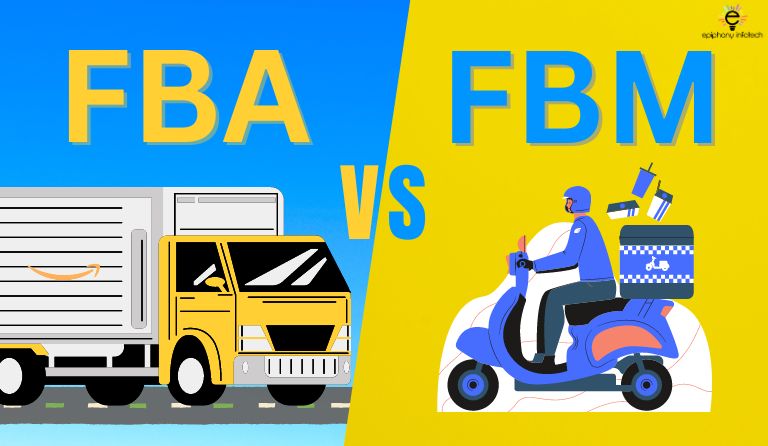TLDR;
Amazon provides two fulfilment options for sellers: FBA (Fulfillment by Amazon) and FBM (Fulfillment by Merchant). FBA offers global reach, Prime eligibility, and hands-off management but comes with fees and limited control. FBM gives sellers control over fulfilment, cost, and flexibility but lacks Prime eligibility. Consider factors like business size, product type, costs, and control to choose the right strategy for optimal performance on the Amazon marketplace.
Introduction to Amazon FBA and FBM
Did you know that choosing the right fulfilment strategy can double your sales on Amazon? In 2022, studies showed that 64% (source) sellers use the FBA method to sell their products on Amazon, and only 15% (source) of sellers use the FBM method. So, Amazon FBA (Fulfillment by Amazon) and FBM (Fulfillment by Merchant) are two different fulfilment methods offered by Amazon to sellers. The choice between Amazon FBA (Fulfillment by Amazon) and FBM (Fulfillment by Merchant) can significantly impact a seller’s success in the Amazon marketplace. These services enable businesses to efficiently manage their inventory, shipping, and customer service on the Amazon platform.
Amazon FBA allows sellers to leverage the e-commerce giant’s vast infrastructure, handling inventory storage, order fulfilment, and customer service. This not only streamlines operations but also enhances Amazon customer satisfaction with reliable shipping and efficient service. On the other hand, FBM provides sellers with greater control over the fulfilment process but requires them to manage storage, packing, and shipping independently. Navigating the choice between these two methods is crucial, as it can be the key to doubling sales and optimizing overall performance on the Amazon platform. Let’s find which is more suitable for your Amazon business.
1. What is Amazon FBA?
Amazon FBA, which stands for Fulfillment by Amazon, is a service offered by Amazon that allows sellers to store their products in Amazon’s fulfilment centres. In FBA, When a customer places an order for a product, Amazon takes care of storage, picking, packing, and shipping the item to the customer on behalf of the seller. Additionally, Amazon provides customer service and handles returns. It’s a hands-off approach that frees up your time for strategic business growth.

1.1 How does Amazon FBA work for Sellers?
Send Inventory to Amazon: Sellers ship their products to Amazon’s fulfilment centres, where the items are stored until they are sold.
Listing Products on Amazon: Sellers create product listings on their Amazon Seller Account, specifying that they are using the FBA service.
Customer Places an Order: When a customer places an order for a product, Amazon’s system determines the closest fulfilment centre with the product in stock.
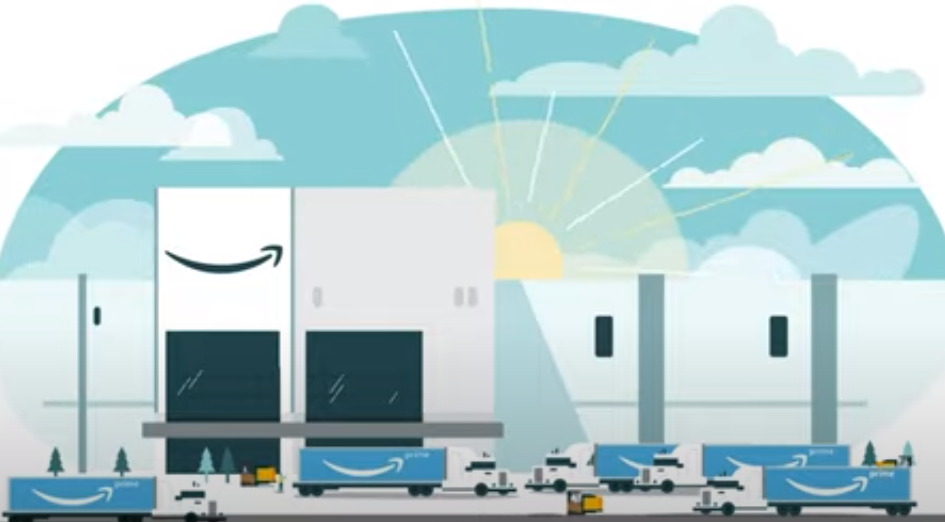
Amazon Customer Service and Returns: Amazon handles customer service and manages returns on behalf of the seller.

1.2 Pros & cons of Amazon FBA
Pros of Amazon FBA
Global Reach: Amazon FBA allows sellers to access a vast customer base globally, leveraging Amazon’s extensive network.
Prime Eligibility: Products stored in Amazon fulfilment centres are eligible for Amazon Prime shipping, attracting more customers who prefer fast and reliable delivery.

source: Amazon.com
Amazon SEO: Amazon’s A9 search algorithm is secretive, but it’s widely understood that Fulfillment by Amazon (FBA) likely plays a role. In search results, FBA offers tend to have an advantage over Fulfillment by Merchant (FBM) offers when other factors are equal.
Customer Trust: Many customers trust products fulfilled by Amazon, which can lead to increased sales and improved brand reputation.
Scalability: FBA allows Amazon sellers to scale their business without worrying about the logistics and operational challenges of order fulfilment.

Amazon Customer Service: Amazon takes care of customer service related to shipping and returns, reducing the burden on the seller.
Multi-Channel Fulfillment: FBA allows sellers to fulfil orders from other sales channels, expanding their reach beyond the Amazon platform.
Cons of Amazon FBA
Fees: Fulfillment fees, storage fees, and other charges can eat into profit margins, particularly for low-priced or slow-moving products.
Limited Control: Sellers have limited control over the fulfilment process, and issues like damaged inventory or shipping delays may impact customer satisfaction.
Storage Limits: Sellers may face challenges with storage limits, especially during peak seasons, leading to additional fees or restrictions.
Competition: The popularity of FBA has led to increased competition, making it essential for sellers to optimise their strategies to stand out.
Product Prep Requirements: FBA has specific requirements for product labelling and packaging, which may require additional time and effort on the seller’s part.

Dependence on Amazon: Relying solely on Amazon for fulfilment means that sellers are susceptible to any changes in Amazon’s policies or fee structures.
2. What is Amazon FBM?
The term “Merchant Fulfilled Network (MFN)” is Amazon’s designation for the fulfilment method known as Fulfilled by Merchant (FBM). In this approach, sellers list their products on Amazon’s platform while retaining control over storage, shipping, and customer support responsibilities independently. In contrast to FBA (Fulfillment by Amazon), where Amazon takes care of the logistics, FBM puts the responsibility on the seller to manage the entire fulfilment process.

Source: Amazon.com
2.1 How does FBM work for Amazon Professional & Amazon Individual Sellers?
For Amazon Professional Sellers
Professional sellers on Amazon have the option to fulfil orders themselves using the FBM (Fulfillment by Merchant) model.
Sellers store, pack, and ship their products directly to customers, handling the entire fulfilment process independently.
They are responsible for managing their inventory, ensuring timely shipping, and providing customer service related to shipping and delivery.
Amazon Professional sellers typically pay a monthly subscription fee of $39.99.

Individual sellers, like professional sellers, can also use the MFN/FBM model to fulfil orders on their own.
However, individual sellers are not required to pay a monthly subscription fee. They pay only per-item fees and other applicable charges.
Individual sellers have access to the same fulfilment features as professional sellers, but they may find it more suitable for lower sales volumes due to the absence of a monthly subscription fee.
2.2 Pros & cons of Amazon FBM
Pros of Amazon FBM
Merchant Control: With FBM, sellers have complete control over the fulfilment process. They can manage inventory levels, shipping methods, and packaging according to their preferences and business requirements.
Cost Management: FBM allows sellers to have more control over their costs. Since they are not using Amazon’s fulfilment centres, they can potentially save on storage fees and other FBA-related expenses.
Customized Branding: Amazon Sellers can include personalized branding in their packaging, creating a more direct connection with customers. This can help in building brand loyalty and recognition.
Flexible Shipping Options: FBM provides flexibility in terms of shipping carriers and methods. Sellers can choose the most cost-effective or expedited options based on their business needs.
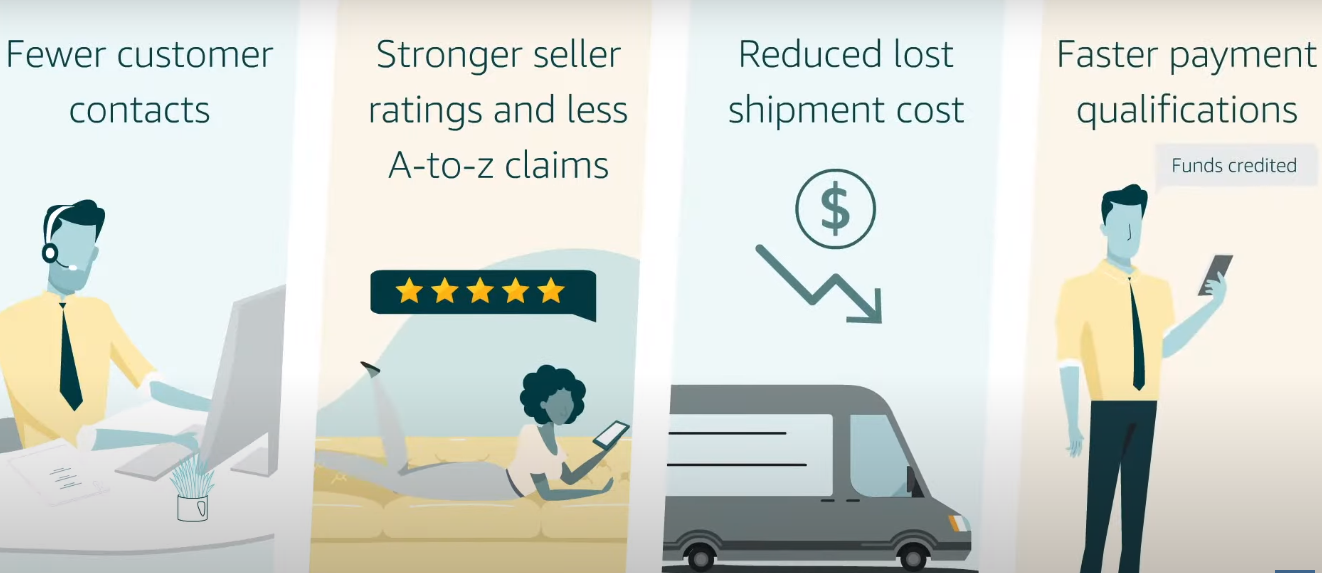
Seasonal Businesses: For sellers with seasonal products, FBM offers flexibility in managing inventory during peak seasons. Sellers can adjust their fulfilment processes based on demand fluctuations.
Quick Changes and Returns: FBM enables sellers to make quick changes to their listings and inventory. Additionally, managing returns may be more straightforward as the seller is directly handling the process.
No FBA Fees: Sellers using FBM don’t incur the fees associated with FBA, such as fulfilment fees, storage fees, and long-term storage fees. This can contribute to a more predictable cost structure.
Cons of Amazon FBM
Shipping Costs and Time: With FBM, sellers are responsible for shipping costs, and these costs can add up, especially if the seller is not able to negotiate favourable shipping rates. Additionally, shipping times may vary, and customers often expect fast and reliable shipping.
Storage and Handling: In this, as an Amazon seller, you need to manage your own inventory storage and handling. This task can be challenging for smaller businesses with limited warehouse space, leading to potential stockouts or storage issues.
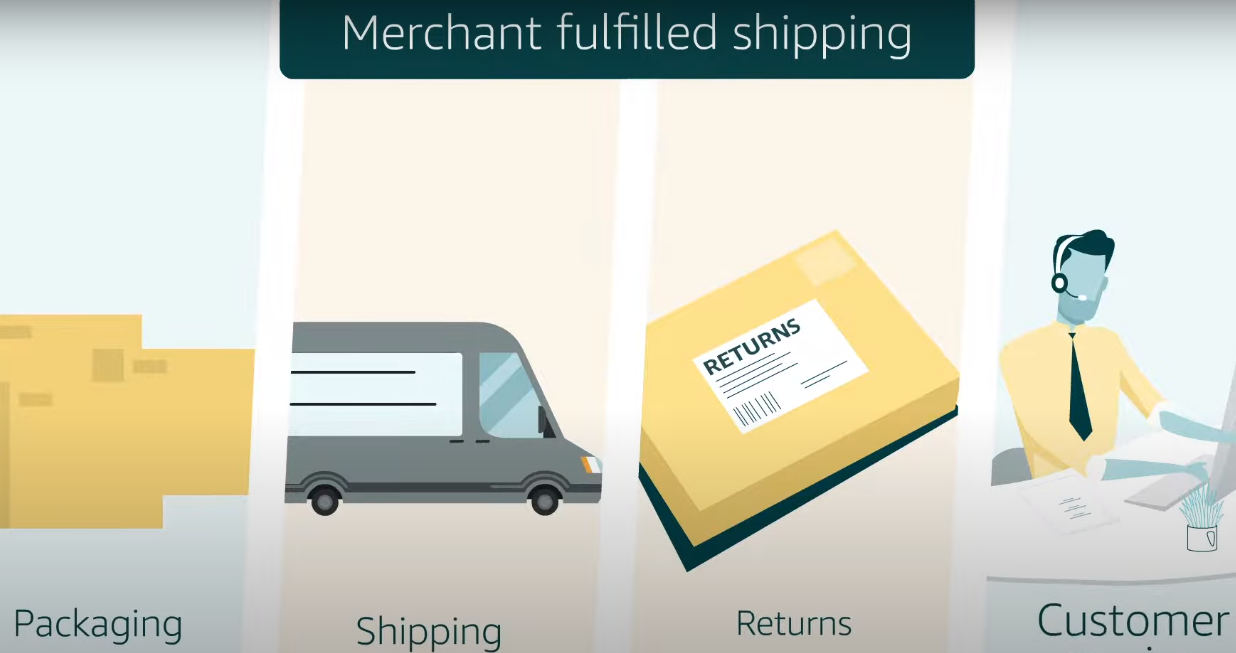
Limited Prime Eligibility: Products fulfilled by Amazon (FBA) are eligible for Amazon Prime shipping, which is a significant advantage for Amazon sellers. FBM, on the other hand, may not be eligible for Prime, potentially limiting the visibility and appeal of your products to Prime members.
Customer Trust and Returns: Customers often trust products fulfilled by Amazon more due to the streamlined and reliable shipping process. With FBM, sellers need to handle customer inquiries, returns, and refunds themselves, which can be time-consuming and may impact customer trust.
No Amazon SEO Benefits: While using Fulfillment by Amazon (FBA) might give you a slight boost in search results compared to Fulfillment by Merchant (FBM), it’s not a magical solution that makes keyword ranking and SEO (Search Engine Optimization) irrelevant. FBA can help improve your rankings and SEO efforts, but it’s not the only factor at play.
Competitive Disadvantage: Many customers filter their searches to show only Prime-eligible items. If your products are not fulfilled by Amazon, then they may not appear in these filtered results. It will put you at a competitive disadvantage.
Seasonal Fluctuations: During peak seasons, such as holidays, managing a surge in orders and ensuring timely deliveries can be more challenging with FBM. Amazon’s FBA service is designed to handle increased demand seamlessly.
Quality Control: When fulfilling orders yourself, there is a higher risk of errors in packing and shipping, potentially leading to customer dissatisfaction, negative reviews, and returns.
Time and Resources: FBM requires more time and resources for order fulfilment, which could be a burden for small businesses or sellers with limited manpower and infrastructure.
3. Fee structure of Amazon FBA & FBM
3.1 Amazon FBA Fees
FBA Fulfilment Fee: The fulfilment cost per unit encompasses various aspects such as order picking, packing, shipping, handling, customer service, and managing product returns. These costs are determined by the weight and dimensions of your product. The shipping weight is computed based on either the unit weight or the dimensional weight of the item.
Amazon has predetermined fulfilment costs for various categories under Fulfillment by Amazon (FBA). For instance, if you sell apparel items weighing 4 oz or less, Amazon will charge $3.43 per item. Conversely, for non-apparel items weighing 2 oz or less, the FBA cost is $3.22 per item. It’s important to note that Amazon FBA pricing can change frequently, sometimes monthly, so regularly checking for updates ensures you stay informed.
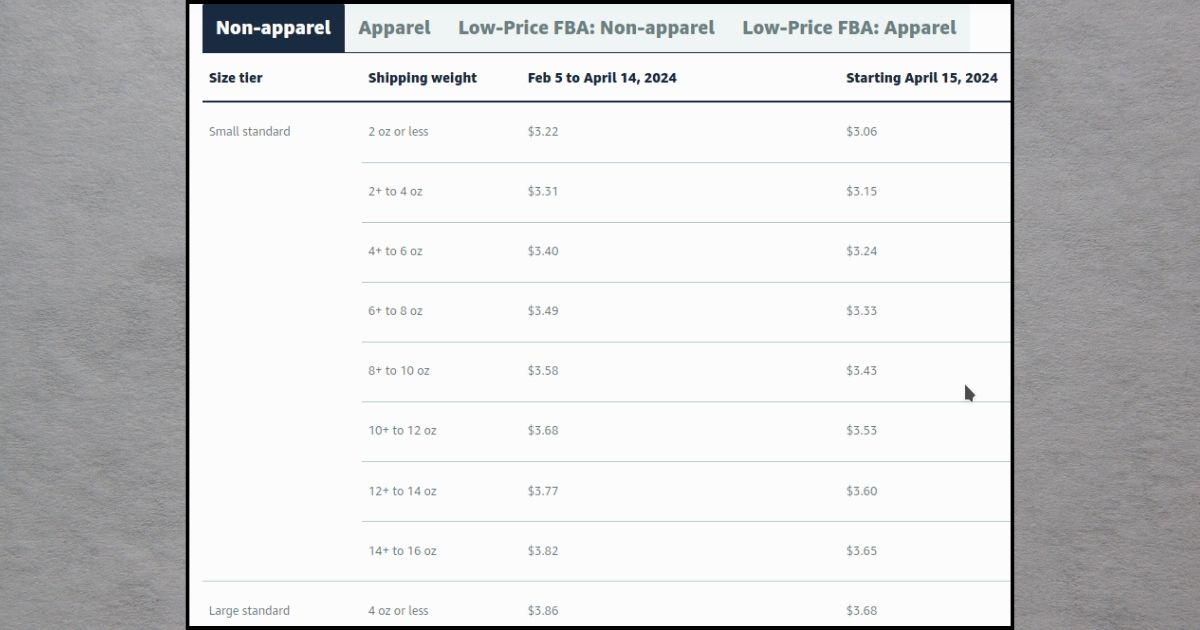
Amazon sets predetermined storage fees, just like fulfilment fees. For standard-size products, the fee is $0.87 per cubic foot, while for oversized products, it’s $0.56 per cubic foot. These costs are determined for specific periods and are subject to change. To stay updated on the latest changes, it’s advisable to regularly visit the official page.
Additional FBA fees include:
Aged Inventory: This incurs a monthly charge for items stored in a fulfilment centre for over 181 days. Maintaining optimal Amazon inventory management is crucial to sidestepping this cost.
Returns Processing: Applied to orders when Amazon facilitates free return shipping for customers.
Removal, Disposal, and Liquidation Orders: You have the option for Amazon to handle the return, disposal, or liquidation of your inventory within a fulfilment centre, subject to a per-item charge.
3.2 Amazon FBM Fees
FBM or MFN (Merchant Fulfilled Network): You handle everything yourself, from storing your inventory to shipping orders and dealing with customer service. Amazon doesn’t charge any additional fees directly for MFN, but you will still pay the standard referral fee (based on your product category) and closing fee for each sale. Additionally, you’ll be responsible for your shipping costs and any related fees (packaging, supplies, etc.).
Amazon Individual Selling Plan Fee: $0.99 per item sold (if not subscribed to the Professional plan).
Amazon Professional Selling Plan Fee: $39.99 monthly subscription (unlimited item listings).
Shipping Costs: Sellers are responsible for the cost of shipping items to customers. Shipping costs depend on the shipping method, weight, and destination.

Additional Costs: Sellers may incur additional costs for packaging materials, order fulfilment, and any third-party logistics services they choose to use.
4. Which is better for you? FBA or FBM
While Amazon FBA is a popular choice for many sellers due to its convenience, FBM is a viable option for those who prefer more control over their operations and want to tailor their fulfilment processes to specific business needs. Ultimately, the decision between FBA and FBM depends on factors such as business size, product characteristics, and individual preferences for managing logistics and customer experience.
Let’s understand it with a Comparison Chart:
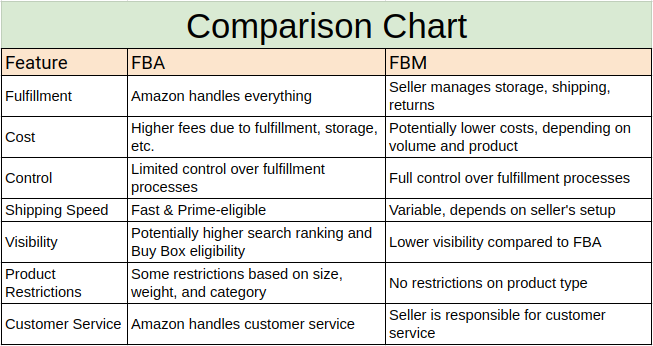
Business Size: FBA is often favoured by larger businesses with higher sales volume, while FBM might be more suitable for smaller sellers.
Product Type: FBA is beneficial for fast-moving products, while FBM might be more cost-effective for slow-moving or unique items.
Costs: Consider the fees associated with each method and how they align with your business model and profit margins.
Control: If you want more control over the fulfilment process and customer experience, FBM might be preferable.
Amazon FBA offers global reach, Prime eligibility, and a hands-off approach, making it suitable for larger businesses looking to scale without the burden of logistics. However, it comes with fees, limited control, and potential storage challenges.

Ultimately, the best approach might involve a combination of both FBA and FBM, allowing you to leverage the strengths of each method for different products within your inventory. Carefully evaluating your business needs, product characteristics, and long-term goals will guide you in making the right choice and optimising your overall performance in the Amazon marketplace.
Managing both FBA and FBM listings can indeed be overwhelming for sellers. That’s why we offer professional Amazon marketing and management services. Our expert team specializes in handling various aspects of Amazon selling, ensuring your experience remains smooth and hassle-free. Whether you’re facing tough situations or simply need assistance in optimizing your listings, we’re here to help streamline your Amazon selling journey.
Anchal Narang works as a Digital Marketing expert at Epiphany Infotech in India. She specializes in On-page and Off-page SEO, with a particular enthusiasm for Amazon marketing management and PPC marketing. Beyond her professional role, she maintains an insatiable curiosity for the latest digital advertising strategies and technology developments.
